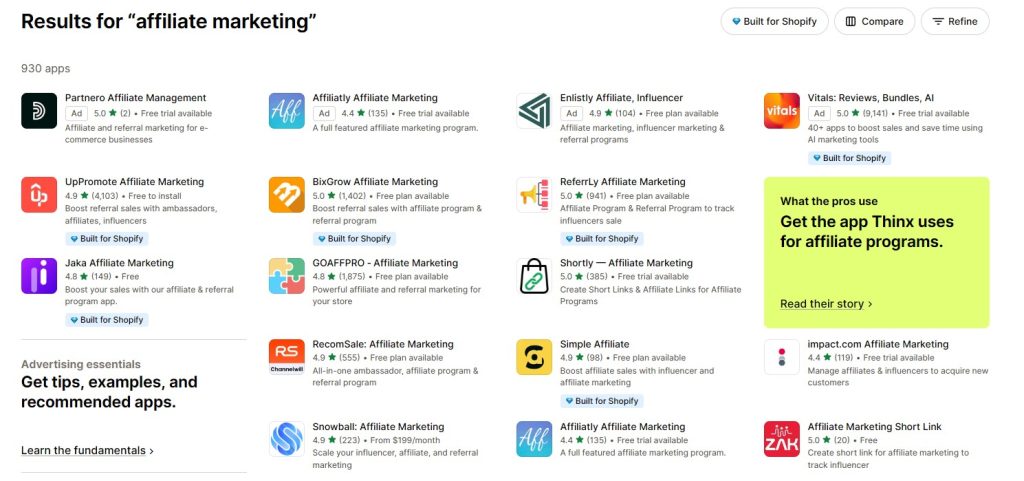Affiliate links tracking is an essential component of every affiliate marketing programs. As technologies grow, there comes more modern affiliate tracking methods.
By understanding tracking methods and its best practices, marketers can create fair, efficient, and profitable affiliate programs. Let’s explore affiliate tracking definition, how it works & benefits!

What is affiliate tracking?
Affiliate link tracking is a method to monitor how customers find your products online. It uses special links given to affiliates who promote your goods. When someone clicks or buys through these links, you see which affiliate drove the sale. This helps merchants pay commissions accurately, measure success, and grow sales with clear data.
Affiliate tracking data is essential for accurate payments, fraud prevention, and performance analysis. It ensures transparency, allowing merchants to reward affiliates fairly. Without it, tracking campaign success and ensuring fair payouts would be nearly impossible.
Affiliate link tracking is essential for running a successful affiliate program. It not only tracks clicks and conversions but also ensures affiliates are credited for their efforts.
Looking for an affiliate management software?
Without affiliate link tracking, merchants wouldn’t know which affiliates drive revenue, making sales tracking and commission payouts unreliable.
What affiliate marketing activities are tracked?
Affiliate marketing activity tracking typically covers several critical actions that help merchants and affiliates measure performance and ensure fair compensation. These activities are tracked through various methods, each capturing specific user behaviors that lead to conversions.
Clicks
When a user clicks on an affiliate link, it is recorded as a click event. Click tracking helps measure the initial engagement with an affiliate’s promotional content, which is often the first step in the conversion funnel.

Sales & Conversion
Sales & Conversion refers to the action that the merchant defines as valuable, such as a sale, sign-up, or download. This is often referred to as the “goal” of the affiliate program.
Conversions are the ultimate metric that determines whether an affiliate marketing campaign is successful, as affiliates are typically paid based on conversions (sales, leads, etc.).
Time and date of interaction
This tracks when the user interacted with the affiliate link, including the time and date of the click, impression, or conversion.
Time and date tracking can reveal trends in user behavior, such as peak hours or seasonal patterns, which help optimize affiliate marketing efforts.
Referral source
This refers to identifying where the user came from before clicking the affiliate link, such as search engines, social media, emails, or other sources.
Understanding the referral source helps in assessing which channels or campaigns are most effective in driving traffic and conversions.
Geolocation data

Geolocation tracking identifies the geographical location (country, region, city) of the user clicking the affiliate link.
Geolocation data is valuable for targeting specific markets and tailoring promotions according to regional preferences or legal requirements (such as GDPR).
Impressions
Impressions refer to how many times an affiliate’s content (like a banner ad or link) is viewed by users, regardless of whether they click on it.
Impressions are crucial for understanding the visibility and reach of affiliate marketing efforts, especially for brand awareness campaigns.
6 Common Affiliate Links Tracking Methods
Affiliate tracking methods are essential for recording user activities and attributing sales or other valuable actions to the correct affiliate. Affiliate conversion/ link/ sales/ activity tracking needs a different method. Each tracking method has its strengths and limitations and is used to track specific actions.
There are 6 common tracking methods, including cookie tracking, postback URL tracking, affiliate fingerprint tracking, pixel tracking, impression tracking & IP affiliate tracking.
Cookies tracking

One of the most popular methods of monitoring affiliates is cookie tracking. When a user clicks on an affiliate link, a small file called a cookie is stored on their browser. This cookie tracks the user’s activity across the website and is used to attribute conversions or sales to the affiliate who referred the visitor. Cookies generally have an expiration date, after which they no longer track the user’s actions.
Cookie tracking is simple and widely used in affiliate marketing. It’s easy to implement and provides a solid record of user interaction with affiliate links.
But sometimes cookies can be deleted by users or blocked by browsers, leading to incomplete tracking. Cookies will expire, which can impact long sales cycles.
Postback URL tracking
A postback URL is a server-to-server communication method that sends conversion data directly from the merchant’s server to the affiliate network. When a user completes a desired action (e.g., making a purchase), the merchant sends a “postback” notification to the affiliate network, confirming the action.
Postback URL tracking is more reliable than cookie tracking because it is not affected by browser settings or cookies. It’s Immediate and accurate reporting without relying on the user’s browser.
However, it requires technical expertise to implement and can introduce delays due to server response times, affecting real-time tracking.
Affiliate fingerprint tracking

We can’t complete the list of affiliate marketing activity tracking methods without an affiliate fingerprint. This method creates a unique “fingerprint” of the user based on factors like their device, browser, operating system, IP address, and screen resolution. This fingerprint is then used to track the user’s actions, even if they switch devices or delete cookies.
With this “fingerprint”, cross-device tracking is possible, allowing the tracking of users even when they switch devices (e.g., from mobile to desktop). It can provide more comprehensive data in environments where cookies are ineffective.
However, it can raise privacy concerns, as it collects detailed information about users.
It’s difficult to implement and can lead to higher costs and technical complexity.
Pixel Tracking
Pixel tracking uses a small, invisible image embedded on a webpage that tracks a user’s actions when they visit or interact with a particular page. This method records the conversions or actions triggered by a user after they click on an affiliate link, making it especially useful for measuring the effectiveness of affiliate-driven sales or sign-ups.
However, pixel tracking can be affected by ad blockers or privacy software, and it requires JavaScript to be enabled in the user’s browser. If the pixel is blocked or not loaded, the conversion cannot be recorded.
Impressions / Views tracking
Impressions or view tracking measures how often an affiliate’s content, such as ads, banners, or links, is displayed to a user.
This type of tracking doesn’t measure engagement or conversions but rather focuses on how many times the content was viewed. It’s particularly useful for campaigns focused on brand awareness rather than direct sales.
While impressions tracking provides insights into the visibility and reach of an affiliate’s marketing efforts, it is less effective in measuring the true effectiveness of the campaign since it does not account for clicks or conversions.
IP affiliate tracking

IP affiliate tracking tracks users based on their IP address, identifying their location when they interact with affiliate content. This method is particularly useful for targeting specific geographic regions and understanding how users from different locations behave on the merchant’s website.
IP tracking can also provide data even when cookies are blocked or deleted. However, it is not without drawbacks. Shared IP addresses, such as those used in public Wi-Fi networks or by users with VPNs, can distort the data, leading to less accurate tracking.
Furthermore, this method can raise privacy concerns, as it involves collecting users’ IP address information.
This efficient affiliate tracking method is the answer to how to track affiliate links. Each of these tracking methods provides a different level of insight into affiliate performance, with their respective advantages and limitations. Using the right combination of methods helps ensure more accurate tracking, which is essential for fair affiliate compensation and optimization of affiliate marketing strategies.
Factors that may Block Affiliate Links Tracking
Despite the advanced technologies available for tracking affiliate activities, several challenges can arise when monitoring affiliate marketing campaigns. These issues can affect the accuracy and reliability of tracking systems, potentially leading to discrepancies in data and affecting how affiliates are compensated.
Ad blockers and privacy extensions

One of the most significant challenges in affiliate tracking is the widespread use of ad blockers and privacy extensions. These tools can block or prevent cookies and tracking pixels from being loaded, which can interfere with affiliate tracking. Since many affiliate programs rely on cookies to track user behavior, ad blockers can result in lost conversions or clicks, ultimately affecting an affiliate’s commissions. To mitigate this, some networks are exploring alternative methods such as server-to-server tracking or using less intrusive technologies.
Cookie deletion
Cookies are often used to track user behavior in affiliate marketing, but they have an inherent limitation: they can be deleted by users or expire after a set period. When a user clears their browser cookies or when cookies expire, tracking data can be lost, leading to discrepancies in conversion reporting.
This problem can be particularly impactful for affiliate programs with longer sales cycles. Some solutions, like postback URL tracking and fingerprint tracking, can help reduce the reliance on cookies and provide more accurate data.
Invalid traffic
Invalid traffic, including fraudulent clicks or bot-generated activity, can undermine the integrity of affiliate tracking. Affiliates might experience fake clicks or conversions that do not come from legitimate users, which can result in skewed data and overinflated commissions.
This is particularly problematic in affiliate networks that use a cost-per-click (CPC) model. Merchants and networks often use fraud detection systems and algorithms to identify and filter out invalid traffic, but this remains a constant battle in affiliate marketing.
Inaccurate reporting
Affiliate programs often involve multiple parties, including the merchant, the affiliate network, and the affiliates themselves. As a result, discrepancies in reporting can occur between the data provided by these entities. Inaccurate or inconsistent reporting can lead to disputes over commissions, lost sales, or incorrect tracking of conversions. Clear communication, integrated reporting tools, and real-time updates can help alleviate this problem.
Geographic issues
Affiliate tracking can also be affected by geographical or legal issues, especially concerning data privacy regulations like GDPR in Europe or CCPA in California. These laws place restrictions on how user data can be collected, stored, and used, which can impact the tracking methods available. For instance, some tracking methods, like cookies and IP tracking, may violate privacy laws if not implemented with explicit user consent. Affiliates and merchants must ensure compliance with these laws to avoid potential fines or legal consequences.
Top Affiliate Program Tracking Tools for Different Platforms

Choosing the right affiliate tracking tool depends on the platform you’re using. Here are some top options:
Shopify
- BixGrow – 2-in-1 affiliate & referral program with flexible commissions.
- GoAffPro – Easy setup, customizable commission structures.
WordPress
- AffiliateWP – Seamless WooCommerce integration, reliable tracking.
- Post Affiliate Pro – Advanced reporting & fraud detection.
SaaS & Custom Websites
- Impact.com – Enterprise-grade tracking & automation.
- Tapfiliate – Cloud-based, supports multiple integrations.
Tip: Choose a tool based on your business size, platform compatibility, and reporting needs. See more details reviews here.
Wrapping it up on affiliate tracking
Affiliate tracking is crucial for measuring performance and ensuring fair payouts in affiliate marketing. Methods like cookies, pixels, and postback URLs help track conversions, but challenges like ad blockers and cookie deletion can affect accuracy.
To run a successful program, merchants and affiliates must understand tracking methods, attribution models, and common issues. Optimizing these ensures better results.
Reliable tracking drives affiliate marketing success. By using the right tools and adapting to changes, merchants can reward affiliates fairly and improve performance. With ongoing advancements, affiliate marketing is becoming more efficient than ever.